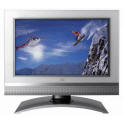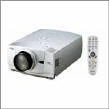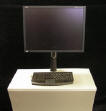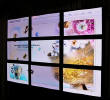|
 |
|
What is an LCD Display and how it works?
part 1 |
|
What is a Plasma Display and how
does it work? |
|
Advantages of LCD Displays |
Resolution
options |
|
Video, Visual, and Imaging Expo |
Audio Expo |
|
What is
HDMI
Plasma and LCD Connections |
DTV and HDTV |
|
What LCD Display and how it works?
FIND OUT WHO MAKES WHICH PLASMA OR LCD
DISPLAYS Plasma
and LCD
Mfg. Information |
|
The
United States Display Consortium was established in July of 1993 as a
partnership created from public and private industry. The Consortium
provides a neutral forum for flat panel manufacturers, developers, users,
equipment and material suppliers.
USDC's mission is to support our member companies and affiliates in building
a world-class competitive display industry.
We're accomplishing this mission by:
1. Supporting and developing an infrastructure for supply of next generation
process equipment, materials and components to the worldwide markets;
2. Analyzing, benchmarking, and reporting on commercial and military market
trends and opportunities;
3. Presenting member views on issues such as public policy and standards;
4. Providing opportunities for member participation in technical and financial
forums;
5. Fostering international cooperation among display makers, integrators, and
equipment materials and components suppliers;
6.
Facilitating and leveraging relationships between member companies and
academic communities.
7.
Promoting innovation and opportunities in display applications through
various media outlets.
We invite you to take a tour of the USDC website, and explore our unique
industry/government partnership.
FIND OUT WHO MAKES WHICH PLASMA OR LCD
DISPLAY
Plasma
Mfg. Information AND WEBSITES |
|
Resolution options: Your basic choices
for native, or true resolution are the following:
VGA, or "640 x 480" – This is the lowest data resolution currently on
the market, and usually the least expensive.
SVGA, or "800 x 600" – This is a popular resolution today, because most
notebook computers are SVGA. Matching the plasma resolution with the
computer resolution will produce the best results.
XGA, or "1,024 x 768" - XGA plasma tvs are generally more expensive, and
are the second most popular resolution format. Many of the newest
products are coming out in XGA. They are getting more popular as prices
drop and the use of XGA notebook computers increases.
SXGA, or "1,280 x 1,024" – SXGA products are high resolution, and
notably more expensive than XGA. These products are targeted for high
end personal computer users and low end workstation users. They are used
primarily for command and control, engineering and CAD/CAM applications
where acute resolution of small details is important.
UXGA, or "1,600 x 1,200" – UXGA is for very high resolution workstation
applications that are detail or information intensive. These are
expensive plasma tvs that support a broad range of computer equipment.
Relatively few products on the market have this native resolution.
Native Resolution
The number rows of horizontal and vertical pixels that create the
picture. The native resolution describes the actual resolution of the
plasma display and not the resolution of the delivery signal. When the
delivery format is higher or lower than the flat screen's native pixel
resolution, the delivery signal will be converted to the plasma's native
resolution through an internal converter. Generally, the closer the
incoming picture signal is to the native pixel resolution on the plasma
display monitor - the better the picture. For example, a VGA computer
signal of 853X480 will match up perfectly with a plasma monitor with
853X480 native pixel resolution, while an XVGA signal of 1024X768 will
match up better with a plasma monitor that has the higher resolution of
1024X1024. There are more considerations here that deal with the quality
of the internal converter/scalar, and also whether or not the monitor is
progressively scanning (853X480) or interlacing the signal (1024X1024).
All 42" inch plasma display monitors are HDTV ready, while none will
show the true HDTV signals of 1080i. However, they will benefit from the
better signal and show something very close.
The options available for native resolution include: 1024x1024,
1024x768, 1280x768, 1365x768, 640x480, 825x480, 853x480.
Benefits of Higher Resolution: High
resolution plasmas are able to show more picture details than low
resolution plasma tvs. Also, since there are more pixels used to make
the image, each individual pixel is smaller, so the pixels themselves
become less visible on the screen. However, you will pay more for higher
resolution. So choosing the right resolution is the first step in
finding the right plasma screen tv.
Please view our DTV and HDTV comparison chart for further digital tv
information.
|
|
|
Digital television, or DTV, is the new
industry standard for broadcasting picture and sound using digital
signals, allowing for dramatic improvements in both picture and sound
quality vs. conventional NTSC analog programming. DTV programming can be
delivered in either of two basic formats: standard analog definition (SDTV)
or high definition (HDTV).
| |
|
DTV
Format Comparison |
|
Transmission Type
|
Analog |
Digital |
Digital |
Digital |
Digital |
| |
NTSC |
Standard
Definition |
Standard
Definition |
High
Definition |
High
Definition |
|
Maximum
Resolution |
480i |
480i |
480p |
720p |
1080i |
|
Aspect
Ratio |
4:3 |
4:3 |
4:3 or
16:9 |
16:9 |
16:9 |
|
Channel
Capacity |
1 |
5-6 |
5-6 |
1-2 |
1 |
|
Description |
Standard
TV as we know it today |
Good
Picture and Sound —DVD or DBS Quality |
Better,
depending on source; can be outstanding |
Best
Possible |
Best
Possible |
|
HDTV is the highest form of digital television, delivering up to 1,080
interlaced scan lines. HDTV produces images that far surpass any you've
ever seen in a home environment! SDTV, or Standard Definition, also
represents a dramatic improvement over today's TV, with the added
benefit of allowing stations to broadcast multiple programs within the
same bandwidth as an HDTV signal.
| |
|
DTV
Format Detail |
|
Scan
Lines
|
Scan
Rate |
Pixelization |
Frame
Rate |
Aspect
Ratio |
Formats |
|
SDTV |
525 total
480 active |
15.75 kHz
(60i) |
480 x 640 |
24p, 30p,
60p or 60i fps |
4:3 |
4 |
525 total
480 active |
31.5 kHz
(60p) |
480 x 704 |
24p, 30p,
60p or 60i fps |
4:3 or
16:9 |
8 (4x2) |
|
HDTV |
750 total
720 active |
45 kHz
(60p) |
720 x 1080 |
24p, 30p,
60p |
16:9 |
3 |
1125 total
1080 active |
33.75 kHz
(60i) |
1080 x
1920 |
24p, 30p,
60i |
16:9 |
3 |
|
The right distance depends on the size of
your TV:
- For 20 to 27-inch displays, you should
be able to watch comfortably from 2.5 to 5 feet away.
- For 32 to 37-inch TVs, you should sit
back 6 to 8 feet from the screen itself.
- For 42 to 46-inch TVs, you'll need 10
to 14 feet between you and the screen.
- 50-inch LCD displays look best when
viewed from 12 to 16 feet away.
|
|
|
|
What are the
advantages of LCD Displays?
To help you find
the best LCD screen for your application, we've put together
this guide to the features you should look out for. You'll find
most of these features listed for each screen we sell under the
Buy
section.
Reviewer:
Jack Burden
Besides looking cool and
oh-so futuristic in your living room, what are the advantages of
owning an LCD TV or monitor?
It's easier to watch.
Flat panel TV displays like LCDs and Plasmas are significantly
brighter and feature higher contrasts than traditional CRT sets.
Which means that an LCD TV will perform exceedingly well under
most ambient light conditions. A brightly lit room won't wash
out its picture, nor will lamplight cause a glare on your
television screen. The beauty of these flat screens is that you
don't have to turn out the lights to see the image clearly and
easily. Nor do you have to worry about eyestrain, since neither
LCDs nor Plasmas flicker the way old-fashioned TVs do.
And, you can watch TV from almost
anywhere in a room since flat-screen LCD television displays can
have up to a 160° viewing angle, which means
your TV will look good when viewed from any point 80° in either
direction from the center of the display.
One issue affecting the overall
quality of the picture reproduced on LCDs has to do with dot
pitch. This term refers to the distance between subpixels of the
same color in adjoining pixel triads. The closer these "dots"
are to one another, the sharper the resolution will be. This is
especially true when displaying computer signal images and
graphs. And the picture in front of you will be more realistic
and detailed. Higher dot pitches also increase the viewing
angles of LCD panels. Since dot pitch is measure in millimeters
(mm), a good rule of thumb is this: Smaller dot pitches make for
sharper images. You generally want a dot pitch of .28mm ["
10,000 pixels/in2 of your display] or finer.
Note: Plasma TV displays have
long been touted as having wider viewing angles than comparably
sized LCD monitors. But recent improvements in quality have made
LCD televisions and monitors comparable to Plasma TVs with
respect to their viewing angles. According to Sharp, a leading
manufacturer of LCDs, the newest generation of LCD displays have
just as good viewing angles as plasma sets, but this is only
true of the better brands. In any event, even the best LCD
monitors have yet to achieve the breadth of viewing angles found
on typical Plasma monitors.
You can watch your new
television right out of the box because the tuner is included.
LCD TVs generally come with tuners and speakers already built
in, so they're more or less plug-and-play devices. Since most
LCD TVs don't require external tuning devices, they are ideal
for smaller applications, where space is at a premium (like
bedrooms and small living rooms) or where clutter is
inconvenient (like crowed kitchen countertops).
Note: Some LCD televisions have
outboard media receivers, though many-like Toshibas-don't.
Always inquire about extra hardware before you buy: You won't
always see your LCD monitor pictured with an external receiver
(even if it has one), so it's up to you to find out whether
there is any "extra" hardware you need to know about.
The picture is smooth,
colorful, and (best of all) wide. LCDs have none of
those annoying scan lines that conventional sets do. This owes
to the fact that each subpixel has its own transistor electrode,
which creates smooth, evenly lit images across the entire
surface of the display. It also enables these displays to
reproduce images that are saturated with color. [256 shades of
red x 256 shades of green x 256 shades of blue " 16.8 million
different colors!]
Note: All this requires an
enormous number of transistors-upwards of 2.4 million for
displays supporting a typical resolution of, say, 1024x768. This
means that, if there is a problem with any one of these
transistors, a subpixel will be affected, which causes the pixel
associated with it to fail. Dead pixels will
emerge over time and with use. In general, though, the number of
dead pixels affecting a given display will be few enough so as
to go virtually unnoticed by the average viewer.
Recent advances in LCD technology
have markedly increased the response time of
these displays, resulting in even smoother on-screen
presentations. One way to think about response time is in terms
of the amount of time it takes a pixel to "refresh" itself-i.e.,
to go from being active to being inactive, which is to say,
ready to be re-activated). Response time is measured in
milliseconds (ms), with the best LCD monitors now clocking in
with response times under 20ms. Slower response times (>20ms)
can cause the image on the panel to lag and appear jerky, an
effect known as "streaking" or "trailing." Another
phenomenon associated with slower response times is
"ghosting." This occurs when the display is made to switch
quickly from light to dark states (or vice-versa). In these
instances, on-screen images may appear to stay on the screen
belatedly.
LCD displays come either with a
16:9 aspect ratio (i.e., 16 units wide to 9 units high), the
proper one for viewing HDTV and for watching DVDs, or with a 4:3
aspect ratio, the norm for most broadcast television shows. If
you opt to go with a widescreen (16:9) display, does this mean
that you'll have to watch some shows where the image is
distorted or stretched unnaturally? No. When displaying a
"normal" or 4:3 picture image from satellite, VCR, or cable TV,
the image can be viewed in a number of ways-in its original
format (with black or gray bars on the sides of the screen), or
in "full" mode (where the image is converted or "stretched"
using specially designed algorithms to reduce the visible
stretch marks as much as possible). Again, the quality of the
picture produced under such circumstances depends largely on the
quality of the television with which you scale-up 4:3 pictures
or scale-down 16:9 ones. Nevertheless, this is only a temporary
dilemma: Since HDTV is shown in widescreen, this is the format
of the future for much of broadcast television.
The display is
multi-functional and long-lived. An LCD is a television
monitor, capable of displaying HDTV, regular TV, and home video.
It's also a computer monitor. In fact, it can accept any video
format. LCD displays typically include inputs for (a) composite
video, (b) S-video and component video, and (c) one or more RGB
inputs from a computer. Because of the high resolution of LCDs,
text and graphics look especially sharp when viewed on them,
which makes them the best solution for displaying data and
web-based content.
Note: Some LCDs (including
many by Sharp) do not come with RGB inputs. If you plan to
utilize your LCD display as a computer monitor, be sure to check
out the specs of the unit you're thinking of purchasing.
You can expect to use your LCD
monitor in many capacities for many years: The average lifespan
of one of these displays is 60,000 hours. If watching TV was
your full-time job, and you did it 24 hours a day, it would take
you almost 7 years to wear out your LCD display. With more
normal viewing habits of, say, 8 hours per day, you can extend
the lifespan of your TV by a decade or more (to about 20 years)!
Note: The lifespan of an LCD
display is generally longer than that of similar-sized plasma
displays. Some manufacturers claim that their LCDs can last
upwards of 80,000 hours when used continuously under controlled
conditions (e.g., in a room with "standard" lighting conditions
and 77° temperatures throughout). Just how realistic such claims
are is debatable. After all, whose living room has no windows
and remains at a perfectly comfortable 77 degrees year-round?
A more immediate concern is the
actual lifespan of the light source in your LCD. This is perhaps
THE critical component of your display unit. It is particularly
important for maintaining a proper white balance
on your TV. As these florescent bulbs age, colors can become
unbalanced, which could result in too much red, for example, in
your picture. So, it pays to buy name-brand displays. You will
definitely pay more for better LCD display brands like Sharp,
Toshiba, JVC, or Sony than you will for cheap Chinese or Korean
variety knock-offs, but you'll get a backlighting bulb of higher
quality and, in the end, a TV whose colors will stay truer
longer.
In some cases, the warranty for
this particular feature can be shorter than for the display as a
whole. This means you might have to buy a whole new LCD monitor
because the coverage on its backlight has expired. Moreover,
some bulbs can be replaced, while others are built in to the
unit itself. You should definitely do some research on the
backlighting system, how it's configured, and how it's
warranted.
|
|
|
Computers
We can fully
accommodate your needs in Registration, Tradeshow Offices,
Training Labs, Exhibits, Cyber Cafés and Messaging Centers.
Our unparalleled service and support makes us the best
choice every time.
We have highly trained technicians and experienced show
coordinators on site during the convention.
When working with us, you can be assured that your computers
and peripherals will be delivered Clean, Working and On
Time.
With brand names you can trust like Compaq, Dell, IBM, NEC,
Apple, and Hewlett Packard.
We have successfully supported Conventions and Trade Shows
for over 20 years.
You get all this with outstanding Service, Trained Support
Personal, and Competitive Pricing. |
|
|
 |
 |
|
|
|
 |
 |
|
|
Rent
Tradeshow
AV Equipment
for events, conventions, trade shows, keynote and breakout
rooms |
Production
Set Designs |
NEW
20 inch or
30 inch LCD HDTV display rentals |
Polycom
audio video
conference rentals |
|
Privacy
|
Plasma
Mfg. Information |
New
3D LCD
Technology |
Home |
|
|